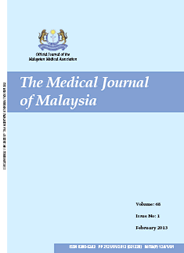MJM, Vol 70 Supplement 1 September 2015
Food label reading and understanding among
Malaysian adult: findings from MANS 2014
Institute for Public Health, Ministry of Health Malaysia
ABSTRACT
Introduction: Food labelling regulation has been implemented to enable consumers to make informed choices before purchasing pre-packaged foods. This study determined the prevalence of reading food labels among Malaysian adults. It also described types of labels read and understanding of the information.
Methods: This nation-wide cross-sectional study was conducted from March to May 2014. Respondents aged 18-59 years were interviewed using a pre-tested and validated questionnaire adapted from NHMS 2006. They provided information on their use and understanding of nutrition label every time they bought or received food and types of information read. The prevalence of respondents reading expiry date and precautionary label were also determined. Complex data analysis was done using Stata version 12.0.
Results: There were 2,992 respondents who answered the questionnaire (99.7% response). Percentage of respondents who stated they always read label was 23.0%, sometimes read was 22.0% and never read was 55.0%. Respondents who declared they always understand label was 48.7%, sometimes 40.8% and did not read 10.5%. About 92.0% and 66.0% of the respondents stated they always / sometimes read expiry date and precautionary label respectively, every time when buying or receiving food. Among those who always and sometimes read label, the three most popular nutrient information read were carbohydrate (21.6%), fat (20.0%) and total energy (14.5%).
Conclusion: Only half of the Malaysian adult stated that they read the food label when buying or receiving food. A high proportion of adult subjectively claimed that they understand the information read. Adults focused to read expiry date and the prevalence of reading information on nutrient was low among the respondents. Findings can be used to implement effective education programmes to instil an awareness to read and use the label information as one of the means in choosing healthy diet.
